As we step into 2025, the commercial cleaning industry is undergoing a transformation, driven by advancements in technology, heightened health awareness, and the need for greater efficiency. For commercial property managers, staying ahead of these trends is essential to maintaining a clean, safe, and productive environment. In this guide, we’ll explore the top commercial cleaning trends shaping the industry and how they can enhance your facility’s operations.
1. Smart Cleaning Technology
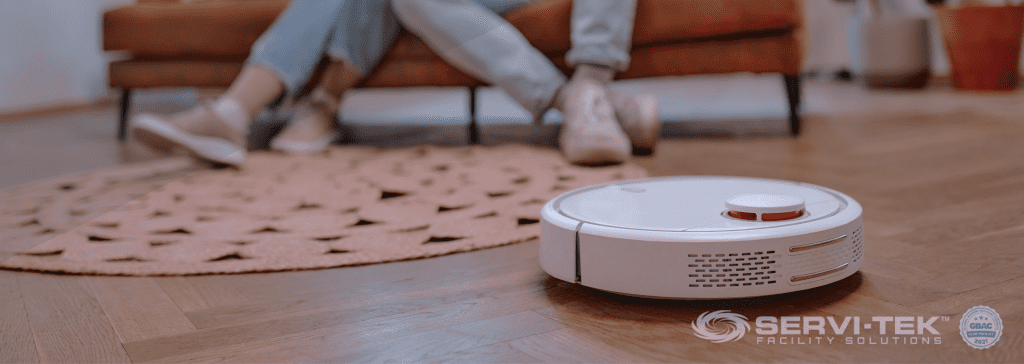
The integration of smart technology in cleaning services is redefining janitorial operations. Automation and data-driven tools are enabling facility managers to monitor cleanliness levels and optimize resources.
Key Innovations:
- IoT-Enabled Cleaning Equipment: The Internet of Things (IoT) technology allows cleaning machines to collect and share data. For instance, smart vacuums and floor scrubbers can report their usage, maintenance needs, and cleaning efficiency.
- Sensor-Based Monitoring: Sensors installed in restrooms and high-traffic areas monitor usage and alert cleaning teams when service is required, ensuring optimal cleanliness without wasting resources.
- Robotics: Autonomous cleaning robots are becoming more common, capable of performing tasks like vacuuming, mopping, and disinfecting large areas efficiently.
Benefits:
- Improved efficiency with real-time data.
- Enhanced cleanliness and hygiene standards.
- Reduced labor costs by optimizing cleaning schedules.
How to Implement: Consider investing in IoT-enabled cleaning tools and partnering with professional janitorial services that utilize smart technology to maximize your facility’s efficiency.
2. Sustainability and Green Cleaning
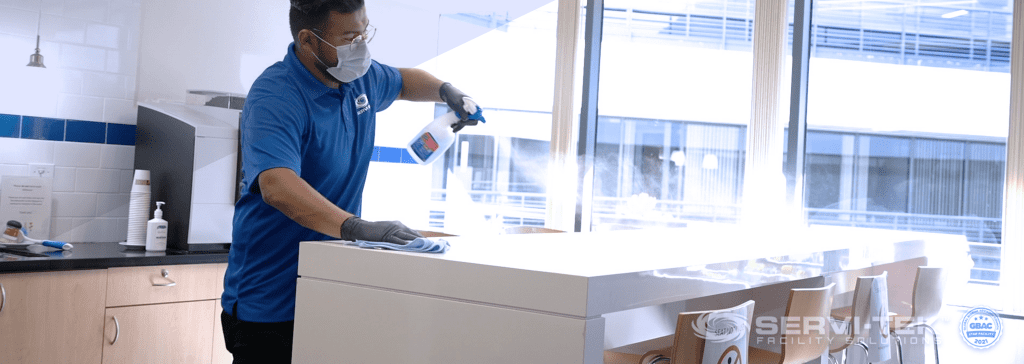
With a growing emphasis on environmental responsibility, green cleaning practices are more than a trend—they’re a necessity. Using eco-friendly products and sustainable methods not only benefits the planet but also creates a healthier indoor environment.
Green Cleaning Practices:
- Non-Toxic Cleaning Products: Switching to biodegradable and non-toxic chemicals that are safe for employees and the environment.
- Water Conservation: Using advanced cleaning tools that minimize water usage.
- Energy-Efficient Equipment: Opting for energy-saving vacuums and other machines.
Benefits:
- Reduced exposure to harmful chemicals for employees.
- Lower carbon footprint.
- Enhanced reputation for sustainability efforts.
How to Implement: Work with cleaning providers that specialize in eco-friendly practices. Request detailed information about the products and methods they use.
3. Customized Cleaning Schedules for Offices

Gone are the days of one-size-fits-all cleaning plans. Modern commercial cleaning services focus on creating customized schedules tailored to the unique needs of each facility.
Features of Customization:
- High-Traffic Area Focus: Identifying and prioritizing cleaning in areas like lobbies, restrooms, and break rooms.
- Flexible Timing: Offering cleaning services during off-hours to avoid disrupting employees and tenants.
- Specialized Services: Including services like carpet cleaning, window washing, and deep sanitation as needed.
Benefits:
- Better allocation of resources.
- Improved employee satisfaction with a consistently clean environment.
- Cost savings by focusing on what your facility truly needs.
How to Implement: Work with a cleaning provider to assess your facility’s layout, traffic patterns, and specific needs. Develop a tailored cleaning plan that aligns with your operational schedule.
4. Focus on Health and Wellness
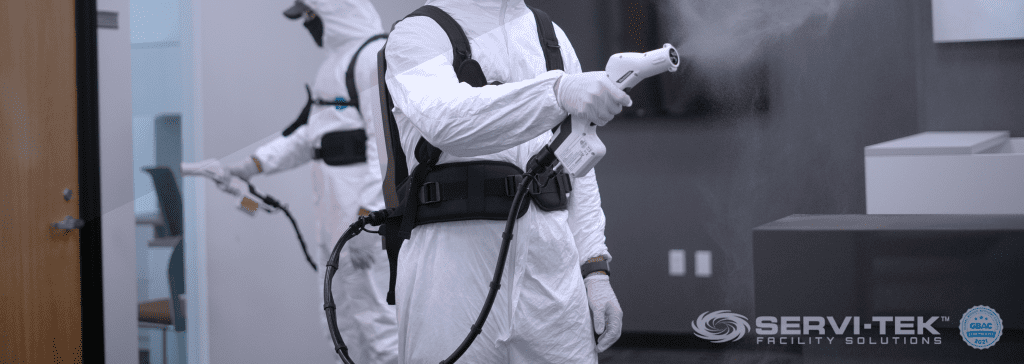
Employee health and wellness remain top priorities for businesses. Clean workspaces play a crucial role in minimizing health risks and promoting overall well-being.
Key Areas of Focus:
- Enhanced Disinfection Protocols: Frequent cleaning of high-touch surfaces like door handles, elevator buttons, and shared equipment.
- Improved Air Quality: Incorporating air duct cleaning and using HEPA filters to reduce allergens and pollutants.
- Touchless Solutions: Installing hands-free soap dispensers, faucets, and trash cans to limit the spread of germs.
Benefits:
- Reduced absenteeism due to illness.
- Higher employee satisfaction and productivity.
- A safer environment for everyone in the building.
How to Implement: Review your current cleaning practices and identify areas for improvement, especially regarding disinfection and air quality. Consider preventative maintenance for commercial buildings to address long-term wellness.
5. Emphasis on Training and Certification
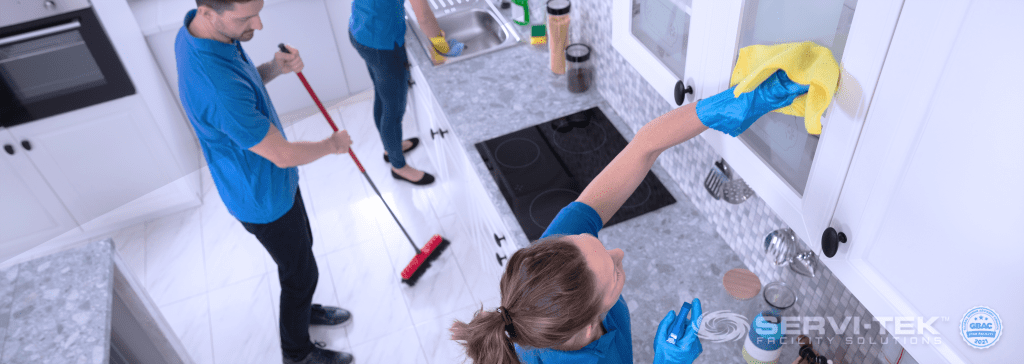
As cleaning standards rise, so does the need for skilled professionals. Proper training and certification ensure that cleaning staff can meet modern expectations.
Training Focus Areas:
- Proper use of cleaning equipment and chemicals.
- Compliance with safety and environmental regulations.
- Understanding of emerging technologies and techniques.
Benefits:
- Consistent quality of service.
- Reduced risks of mishandling equipment or chemicals.
- Improved confidence in your cleaning provider’s capabilities.
How to Implement: When choosing a cleaning partner, ask about their training programs and certifications. Look for companies that prioritize ongoing education for their staff.
6. Data-Driven Cleaning Decisions

Leveraging data to inform cleaning practices is becoming a game-changer for facility maintenance.
Examples of Data Utilization:
- Usage Analytics: Tracking restroom traffic to determine cleaning frequency.
- Performance Metrics: Measuring the effectiveness of cleaning routines and identifying areas for improvement.
- Predictive Maintenance: Using data to schedule equipment maintenance before issues arise.
Benefits:
- Optimized cleaning schedules and resources.
- Improved cleanliness and efficiency.
- Lower facility maintenance costs.
How to Implement: Partner with a cleaning provider that uses advanced analytics and reporting tools to deliver data-driven insights.
7. Collaborative Cleaning Programs
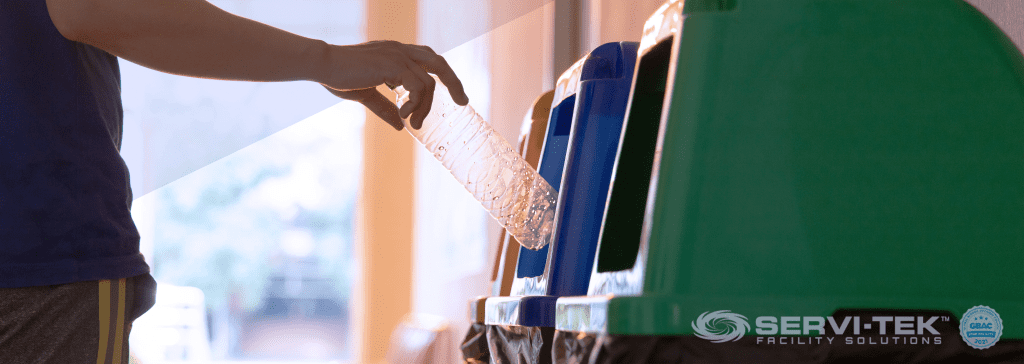
Collaboration between cleaning teams and building occupants is becoming more common. Engaging employees in maintaining a clean workspace can enhance overall cleanliness.
Examples of Collaboration:
- Providing employees with sanitizing wipes for personal workspaces.
- Encouraging proper disposal of waste.
- Sharing cleaning schedules and updates to keep everyone informed.
Benefits:
- Greater accountability among employees.
- Reduced workload for cleaning staff.
- A cleaner and more organized environment.
How to Implement: Foster a culture of cleanliness by educating employees on best practices and encouraging their participation in maintaining the workspace.
8. Flexible Service Models
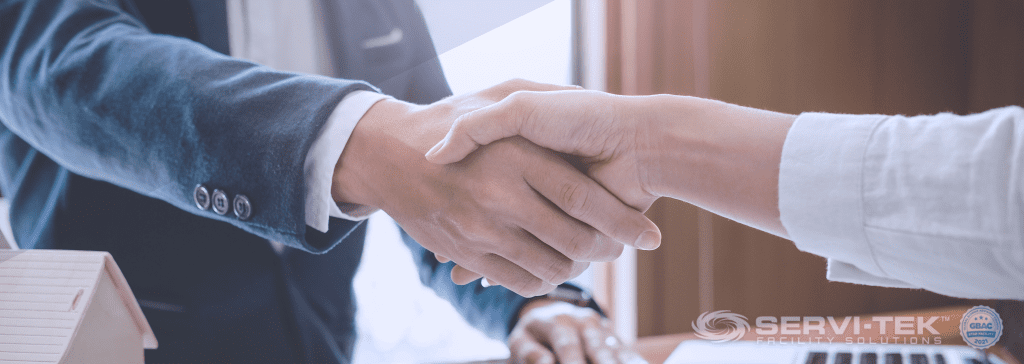
The need for flexibility has extended to cleaning contracts. Businesses are looking for adaptable service models that can change based on their requirements.
Features of Flexibility:
- Month-to-month contracts.
- Options to scale services up or down.
- On-demand cleaning for special events or emergencies.
Benefits:
- Cost savings by avoiding long-term commitments.
- Ability to adapt to seasonal changes or unexpected needs.
- Greater control over cleaning services.
How to Implement: Seek cleaning providers that offer flexible service agreements. Ensure they can scale their offerings to meet your changing needs.
Why Staying Ahead Matters
The commercial cleaning industry is rapidly evolving, and keeping up with these trends is vital for maintaining a competitive edge. By adopting the latest technologies, practices, and innovations, you can:
- Enhance Employee Productivity: Clean, organized spaces foster focus and efficiency.
- Reduce Costs: Preventative maintenance and optimized cleaning schedules lower long-term expenses.
- Boost Tenant Satisfaction: A well-maintained facility attracts and retains tenants.
Take the First Step
Understanding and implementing the top commercial cleaning trends for 2025 can transform your facility’s operations. Whether it’s through smart technology, customized cleaning schedules, or eco-friendly practices, the right strategies will improve efficiency and create a healthier workplace.
Take the first step towards a more efficient and productive facility.



